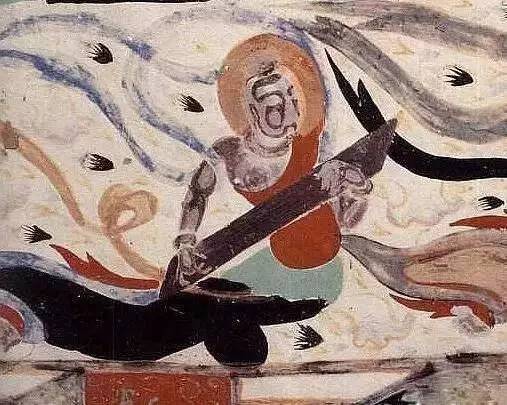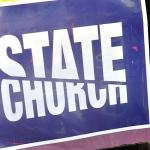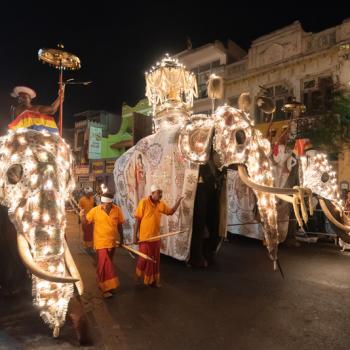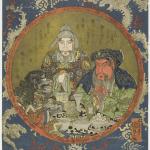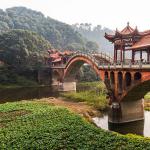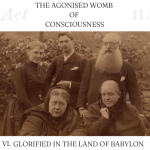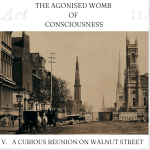The discovery of a long-hidden library in a cave near Dunhuang, China, was one of the great archaeological finds of all time. And if you’ve never heard of it, you aren’t alone.
The discovery of the Dunhuang cave library was “on par with Tutankhamun’s tomb and the Dead Sea Scrolls,” wrote Jacob Mikanowski in the New Yorker (Occtober 9, 2013). The library held more than 45,000 manuscripts and printed documents that had been hidden for 900 years. The texts were in seventeen different languages, many extinct for centuries. They covered topics from religion to history to mathematics to dancing.
Dunhuang was an isolated backwater on the edge of the Gobi Desert. How did the library get there? And who hid it?
About Dunhuang
In the long-ago days of the Silk Road, Dunhuang was bustling with merchants and pilgrims. It was built in an oasis where the Gobi Desert and the far eastern edge of the Taklamakan Desert meet in today’s Gansu Province, China. And it sat on the crossroads of two major routes of the Silk Road network. Merchants traveling between China and the Roman Empire would stop there.
Beginning in the 1st century CE, Buddhist monks from central Asia began to follow the Silk Road merchants into China. This was the primary way Buddhism was introduced to China. In time Dunhuang became a center of Buddhist learning and home to many temples.
About the Dunhuang Caves
And this takes us to the Dunhuang caves. They are formally named the Mogao Caves, and they were carved into cliffs southeast of the Dunhuang oasis over a period of many centuries, beginning in 366 CE. UNESCO says the Mogao Caves “comprise the largest, most richly endowed, and longest used treasure house of Buddhist art in the world.” From the 4th to the 14th centuries the caves were expanded and filled with art. Currently preserved there are 45,ooo square meters of murals and more than 2,000 painted sculptures.
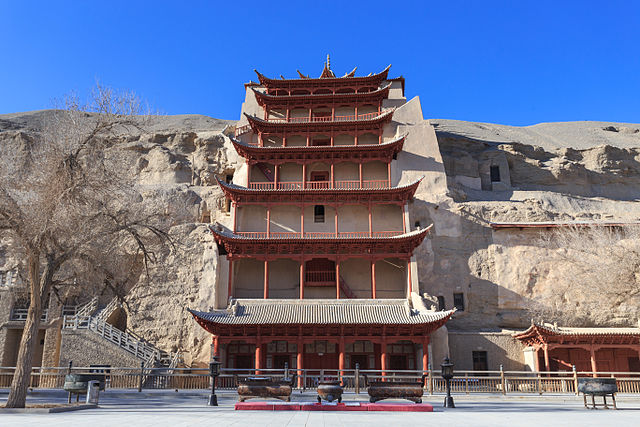
Dunhuang became a magnet for pilgrims. Many came to Dunhuang to see the temples and the caves. Pilgrims from Tibet passed through Dunhuang on their way to the sacred Mount Wutai in today’s Shanxi Province. There is evidence of Christians, Jews, Zoroastrians, Manicheans, and Daoists staying there as well.
Dunhuang Falls on Hard Times
Dunhuang flourished for several centuries. The city came under Chinese rule during the Han dynasty (202 BCE–220 CE, with some interruptions). But it was a frontier community, far from the imperial court. The name “Dunhuang” describes the beacons lit to warn of invaders. An extension of the Great Wall of China was built to protect Dunhuang.
After the fall of the Tang Dynasty (618–907 CE), the reach of China’s rulers was shortened, and during the Song Dynasty (960–1279) Dunhuang was no longer within that reach. Dunhuang was conquered — and destroyed — by Mongols in 1227. A rebuilt Dunhuang was part of the Mongol Empire for a time. The Silk Road was choked off and ended by the Ottoman Empire in 1453. And in the centuries after that, China turned toward trade by sea instead of by land, and Dunhuang faded away.
The Dunhuang Cave Library Discovered
So it was that at the beginning of the 20th century Dunhuang was a shabby ghost of what it had been, and the nearby fabulous caves had long been neglected. A solitary Daoist monk named Wang Yuanlu made it his job to look after the caves.
One day in 1900, Wang Yuanlu noticed something odd. He was smoking a cigarette near a large shrine when he noticed the smoke was wafting toward a wall in back of the shrine. Wasn’t there just solid rock behind the wall? Maybe not. He knocked down the wall and found a room stuffed with documents, stacked ten feet high.
Wang Yuanlu knew he had found something significant and attempted to alert local government authorites. But China had its hands full with the Boxer Rebellion at the time. The officials had no time or budget to deal with a bunch of old scrolls. In 1904 the governor of Gansu Province ordered the monk to re-seal the library room. So he did.
The Dunhuang Cave Library, Even More Discovered
In spite of the disinterest of Chinese officials, rumor of the hoard of ancient documents began to spread. The first foreigner to make the trek to Dunhuang, in 1907, was a Hugarian-born British “Indologist” and explorer named Aurel Stein. It took Stein several weeks to persuade Wang Yuanlu to part with any of the documents. But eventually Wang sold about ten thousand documents and painted scrolls to Stein for a hundred and thirty pounds. Wang Yuanlu decided he could use the money to restore the decaying caves.
Among these documents was the prize of the collection, the printed Diamond Sutra that is now in the British Library. For more on this edition, the oldest printed and dated book in the world, see The Impact of Printing on Religion: Buddhism in East Asia and Celebrating the Diamond Sutra.
Another gem from Dunhuang Library now in the British Library is the Dunhuang Start Chart, which dates to about 700 CE. It is the oldest extant star chart manuscript in the world.

The French scholar Paul Pelliot arrived at the caves three months after Stein. Pelliot also purchased a large number of documents and shipped them back to France. Pelliot was accused of faking the documents, but eventually (with help from the testimony of Aurel Stein) he persuaded a court that they were genuine.
Before long more scholar/adventurers from Europe and Japan had made the long journey to Dunhuang to grab what they could for their museums. By 1910 only about a fifth of the original hoard remained. Only then did the government of China take an interest in the Dunhuang cave library. Among the last acts of the doomed Qing Dynasty was to have the remaining Chinese language documents transferred to Beijing.
The Enduring Mystery of the Dunhuang Cave Library
This much we know: The Dunhuang library must have been sealed in the early 11th century. Nothing dated any later than that has been found there. But why was it sealed? And why those documents?
It’s speculated that the room was sealed to preserve the contents from invaders. It’s known that the nearby city of Khotan was sacked and burned, with its Buddhist monasteries, in 1006 CE. And that corresponds to about when the room was sealed.
But the collection is an odd one. It includes many Buddhist scriptures and commentaries but also random secular texts, such as bills of sale. And there are Zoroastrian, Christian, Jewish, and other religious texts there, in several languages. It seems more the contents of a hoarder’s attic than a library. And that leads to another theory — it was a storeroom for old texts that no one wanted to throw anay, and it was sealed off when it was full and couldn’t hold any more.
The Dunhuang Library Documents Today
More than a century ago the contents of the Dunhuang Library were snatched away without being properly cataloged and scattered around the world in more than a dozen libraries and other institutions. Fortunately documents’ provenance has been preseerved..
An effort began in 1994 to digitize all of the Dunhuang documents and make them available online. This International Dunhuang Project is being coordinated by a team at the British Library, but it is truly an international effort. The old documents are being carefully restored, scanned, and made freely available online.
They still have much to teach us. For example, when writing my book The Circle of the Way: A History of Zen from the Buddha to the Modern World (Shambhala, 2019), I found that current scholars of Buddhist history are leaning heavily on Dunhuang material. Regarding Zen, most of the traditional stories Zen tells about itself are from texts compiled after the library was sealed. Preserved at Dunhuang were older texts and chronicles that added much more detail and, often, contradicted what the more recent records said.
So, for whatever reason the storeroom was sealed, I am grateful.
